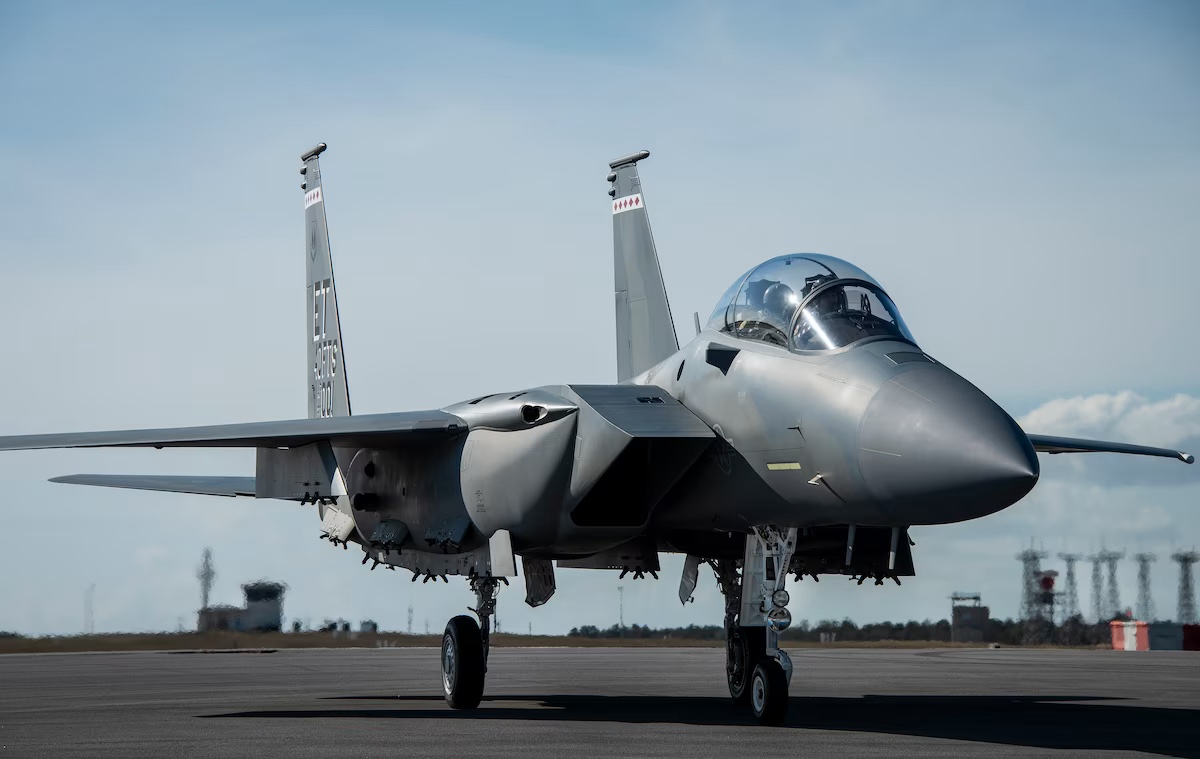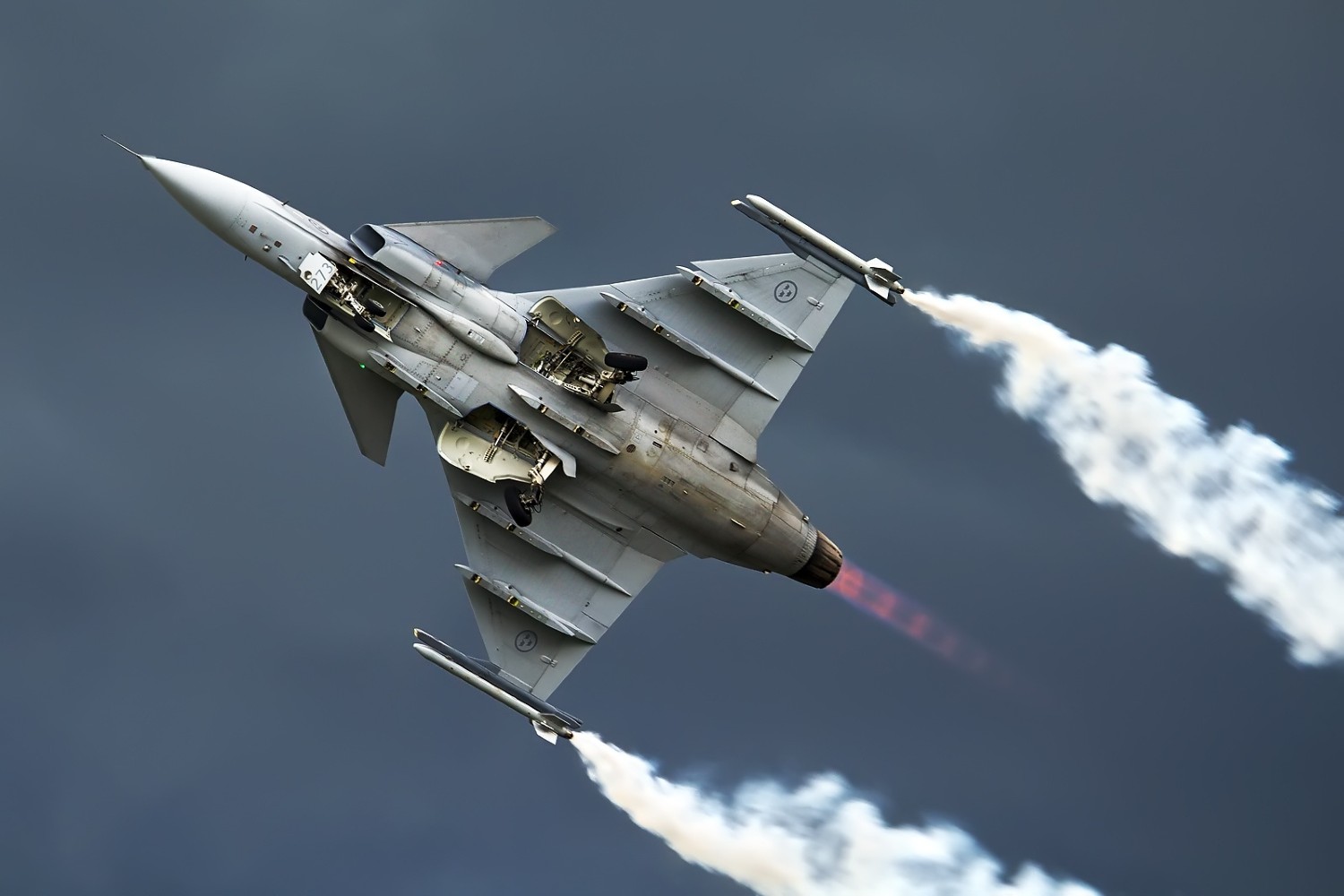India’s 114 Multi-Role Fighter Aircraft (MRFA), the likely mother-of-all-deals, continues to blow-hot-blow-cold. The Indian Air Force (IAF) is down to 31 fighter squadrons vis-à-vis authorized 42 and actually requires much more to contend with the two powerful adversaries.
The IAF has already ordered nearly 200 LCA Mk1 and Mk1A variants and has committed to 200 LCA Mk2. Nine years after the formation of the first IAF LCA squadrons, the IAF still has only around 40 LCA aircraft.
Even if production is increased to 24 a year, it will take long to fill the numbers. India’s Advanced Medium Combat Aircraft (AMCA) is still over a decade away. The last of the MiG 21s are still flying with the IAF. The Jaguars and Mirage 2000 fleets must start retiring by around 2030. Notwithstanding the strong ‘Atmanirbharta’ (self-reliance) push, India would need to induct the 114 MRFA to fill the gap.
The first round of the Medium Multi-Role Combat Aircraft (MMRCA) induction process had to be curtailed to just 36 Rafale for various technical reasons. IAF has clearly stated the operational requirements of these 114 aircraft.
The Parliamentary Standing Committee on Defence report, tabled in the Parliament on December 20, 2023, cited delays in the supply of the initial 40 LCA to the IAF and said the option of buying state-of-the-art fifth-generation fighter aircraft over the counter should be explored.
25 Years Of Kargil War: How India Used ‘World’s Fastest’ Jet, MiG-25 Foxbat, To Gain Edge Over Pakistan
Multi-Role Fighter Aircraft (MRFA) Competition
India issued an RFI in April 2018 for the procurement of 114 MRFA. Responses from all the contenders were received in the latter part of 2018. The Indian Navy was also asked to combine its plan to acquire new fighter jets with this program.
The Navy requires a twin-engine fighter. Their requirement was focused on two maritime aircraft: the Boeing F/A-18E/F Super Hornet and the Dassault Rafale-M. The grapevine has it that the Navy will go for 26 Rafale-M.
There are eight aircraft now in the fray for IAF’s MRFA. These are the Boeing F/A-18E/F Super Hornet, Boeing F-15EX Eagle II, Dassault Rafale, Eurofighter Typhoon, Lockheed Martin F-21 (A variant of F-16V with 14 customization for Indian requirements, Mikoyan MiG-35, Saab JAS-39 Gripen E/F, and Sukhoi Su-35.
The next logical step is the Acceptance of Necessity (AoN) by the Defence Acquisition Council (DAC) and the issue of a Request for Proposal (RFP). Though many aircraft have been analyzed in detail during the MMRCA selection, since all the competing aircraft have gone through upgrades, once the proposal is received, some level of evaluation will be required.
Even if the RFP is sent out today, it could take 5-6 years or more for aircraft to be inducted. The countries security establishment must take the call about 114 aircraft import early enough.

Big Ticket Assessment
Russia has pitched in two aircraft. MiG-35 was part of an earlier evaluation. Based on technical evaluation, only the Rafale and Eurofighter qualified for MMRCA selection. Both scored better than MiG-35.
Also, the aircraft is a derivative of the MiG 29. IAF’s MiG 29s have recently been upgraded and, on a few counts, have reached a similar level. Not many MiG 35s have been built or sold, so it is not a good idea for India to be the main customer.
The Su-35 is a new entrant. It is part of the Su-27/30 family. Currently, nearly 60 percent of the IAF’s aircraft fleet is of Russian origin. This dependence has to gradually reduce to a more manageable figure for supply chain dynamics.
Also, IAF is in the process of upgrading the Su-30 MKI fleet. Effectively, the aircraft will become closer or even better than the Su-35.
Only China has bought 24 aircraft. The total numbers built are still very small. The Russia-Ukraine war also has its dynamics. There are Dollar payment limitations. Russian industry is busy making good the Russian Air Force requirements. Russians feel that there is still a window open for India to be part of the Su-57 fifth-generation fighter.
If the Indian Navy goes for the Rafale-M, then interest in the FA-18 Super Hornet will be almost over. The IAF already has two airbases with full infrastructure to take on one additional squadron each of Rafale. India has already paid a huge amount for one-time India-specific modifications. The price discovery has already taken place. Most analysts feel that the IAF should acquire more Rafale and a total of 140 (114+26) should be made in India.
Both the Saab JAS-39 Gripen E/F and Eurofighter Typhoon are good aircraft. The Gripen will have the GE 414 engine, which will be made in India unless the US puts some restrictions on it. It could also be powered by Eurojet EJ200.

Both aircraft are being aggressively marketed. Their total global numbers would remain relatively smaller, with around 600 Eurofighters built to date and only around 300 Gripen. Finally, the level of Transfer of Technology (ToT), cost, and geopolitical factors play their part.
US Comes Big In Indian Aircraft Eco System
Beginning in 2008, India bought the Boeing P8I, the Lockheed C-130J, the Boeing C-17 Globe Master III, the Boeing CH-47 Chinook, the Boeing AH-64 Apache, and the Lockheed MH-60R Seahawk from the USA.
India is already using the GE-404 on the LCA Mk1 variant and will make GE-414 in India under license production for LCA Mk2 and initial AMCA.
India will soon buy the General Atomics MQ-9B Predator Drones. Americans are keen to sell India a fighter aircraft, which will allow them to access India’s full military aviation ecosystem. Thus, there is a need to evaluate the two main contenders in the fray: one single-engine and one twin-engine.
Boeing F-15 EX Eagle II
Boeing advertises its F-15EX Eagle II by saying, “With a payload capacity of 29,500 lbs. (13,300 kg) – including outsized weapons – the F-15EX delivers affordable mass to address rapidly evolving threats. When this payload is combined with range, contemporary sensors, and an advanced electronic warfare suite, the F-15EX presents peer adversaries with multiple challenges both inside and outside of threat rings”.
They claim that the F-15EX can shoot from a significantly increased range—farther than any other fighter in the U.S. Air Force arsenal—and provides the unique capability of holding 12 AMRAAMs or other large ordinance. It prides itself on its electronic warfare suit, which does not require pods that take away weapon stations.
At 36,741 kg max take-off weight, this twin-cockpit aircraft is considered large and is interestingly quite close to Su-30MKI with a max take-off weight of 38,800 kg. It can carry 13,300 kg ordinance vis-à-vis 8,130 kg load on Su-30MKI.
The multirole strike fighter has been derived from the McDonnell Douglas F-15E Strike Eagle. The program got the impetus when the US government saw delays in the F-35 program, and as a part of cost management vis-à-vis capability management meant cutting down Lockheed F-22 numbers.
The F-15EX is a member of the F-15 Advanced Eagle family of aircraft, a further development of the F-15E, upgrades of which began in 2011 for Saudi Arabia and Qatar. The first F-15EX was delivered in 2021 and fully operational service is expected in July 2024. USA has received 7 out of 104 planned.
The Israeli Air Force ordered 25 F-15IA fighters based on the F-15EX and plans to upgrade 25 F-15Is to the F-15IA standard. Saudi Arabia is looking to upgrade its fleet of F-15SAs to the same standard as the EX. Egypt, Thailand, Indonesia, and Poland are considered prospective customers.
The question being asked is, with nearly 260 Su-30 MKI, which make up over 40 percent of the IAF’s fighter fleet, of similar size class, and with their planned upgrade, does IAF require more aircraft of that weight and size class?
India already has the know-how and ability to modify the aircraft and is integrating Indian weapons into Su-30 MKI. Also, the F-15EX would mean adding another type to India’s multiple fighter fleets. At over $90 million apiece, the F-15EX is not going to be cheap. In fact, it is nearly $10 million costlier than the F-35. Also, it will not be possible to open an assembly line for the F-15 in India.
Lockheed F-21
The Lockheed F-21 is an India-specific F-16 Block 70-plus aircraft with a remarkable ten missiles (eight AMRAAM class and two AIM-9X). It can carry a Lockheed Martin Sniper electro-optical thermal imaging targeting pod. The F-21 will feature aerial refueling with a probe drogue system.
If chosen, the aircraft will be made in India. Lockheed is already making the F-16 wings with the Tata group in India for its global sales. Over 4,600 F-16s have been built to date, and nearly 2,150 are still flying.
The largest number of fighters by any single type. Five more countries are likely to acquire F-16s, including Ukraine. Lockheed Martin, who is the world’s largest defense contractor has offered to start an F-21 factory in India, and India could eventually build planes for future non-American F-21 customers.
The F-21 is essentially an advanced variant of the F-16. Pakistan has been operating F-16s since the early 1980s. Their variant is still at the Block 52+ level. Pakistan is unlikely to get more F-16s as it has chosen the Chinese way with J-10CE.
The Indian public associates the aircraft with an adversary country and has its sentiments accordingly. That was perhaps the reason for the company to give it a new nomenclature, calling it the F-21.
The F-16 and F-15 aircraft made their first flights in 1974 and 1972, respectively. Of course, the F-21 will have state-of-the-art radar, avionics, an electronic warfare suite, and weapons.
With 19,187 kg max take-off weight, it is a similar class as Mirage 2000 (17,000 kg) and MiG 29 (18,000 kg). India is already planning to buy a few additional pre-operated Mirage-2000 and MiG-29s, though that has nothing to do with new aircraft induction.
Conclusion
I do believe that India would have to make a one-time purchase of the 114 aircraft. Ideally, the IAF and Indian Navy must choose the same type. It should be made in India. It must get us more ToT, ideally for the aero engine.
The US is very keen to enter India’s fighter aircraft ecosystem. Indo-US close relations in the Indo-Pacific, the signing of various logistics and communications interoperability agreements, and a large number of military exercises are all indicative of the geopolitical closeness between the two countries.
Ideally, they must offer the F-35 and find a technical way out of the S-400 linkage muddle.
Will India be putting too many eggs in the US military aviation basket is being asked. Currently, the Indian military aircraft mix is roughly 60 percent Russian, 15 percent European, 15 percent US, and 10 percent Indian.
An American fighter induction would mean a US basket of around 30 percent. I personally feel that in around 10 years, India must target increasing the Indian basket to around 25 percent and in 20 years to over 45 percent. This would mean accelerating the LCA and AMCA programs. In the same period, the Russian and Western baskets must be reduced to 30 percent and 25 percent, respectively.




